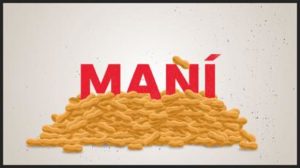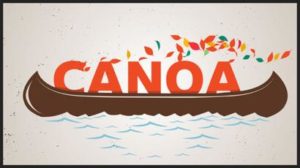LA PRESENCIA DEL ANTIGUO DIALECTO “TAINO” EN EL IDIOMA ESPAÑOL. PALABRAS USADAS.
SEGÚN LOS EXPERTOS, el idioma taíno es el que más presencia tiene en el Español de todos los dialectos de las Américas anteriores a 1492.
Decía Bartolomé de las Casas que la “lengua de los indios” era “la más elegante y más copiosa de vocablos, y la más dulce en sonidos”. A lo que se refería el historiador en sus crónicas desde América era en realidad al taíno, la primera lengua nativa del continente con la que se encontraron los españoles cuando llegaron en 1492.
El exterminio de la conquista española en el Caribe casi borró la presencia Taína de la región, sin embargo, su idioma y raíces culturales han resistido el paso del tiempo.
Fue en La Española (la isla que comparten Haití y República Dominicana) y luego en Cuba, donde los conquistadores europeos se toparon con esa nueva realidad lingüística que, poco sospechaban entonces, acabaría marcando profundamente su propio idioma.
“Al ser la primera lengua con la que se encuentran, es la que deja mayor huella en el español general, convirtiéndose en la más antigua y abundante en nuestro idioma”, destaca María José Rincón, miembro de la Academia Dominicana de la Lengua.
Sin embargo, los conquistadores adoptaron palabras taínas para denominar nuevas realidades que no conocían —sobre todo relacionadas con la naturaleza— y se las llevaron en sus viajes posteriores por otros territorios.
Según Rincón, “el 30% de los indigenismos recogidos en las crónicas de Indias es de origen taíno”, lo cual es “muchísimo” teniendo en cuenta que La Española fue solo la puerta de entrada a América para los españoles, que acabaron por asimilar al pueblo taíno que sobrevivió a las enfermedades europeas o al tráfico de esclavos.
PALABRAS TAINAS USADAS EN NUESTRO IDIOMA.
Según la lexicógrafa, el Diccionario de la lengua española recoge hoy unas 70 voces de origen taíno. Pero en el Tesoro lexicográfico del español de Puerto Rico son más de 800.
Barbacoa: En taíno, se utilizaba para denominar al armazón que sostiene una planta trepadora o a un entramado elevado del suelo donde se coloca la comida para no ser alcanzada por los animales.
En países como República Dominicana se mantuvo el significado original taíno para “barbacoa”, por lo que para referirse a la otra realidad utilizan “parrillada” o “barbecue” (BBQ), como en inglés.
Canoa: La embarcación tallada en una pieza a partir del tronco de un solo árbol, tiene el honor de ser el americanismo más antiguo en ser reconocido oficialmente en la lengua española.
Así, fue la primera palabra indígena americana reflejada en un diccionario español, concretamente en el primer “Vocabulario español-latino” de Antonio de Nebrija publicado en 1494 o 1495.
Es decir, que hay palabras taínas que se convirtieron tan importantes para nuestro idioma que muy poco después de la llegada de los españoles a América en 1492 ya se tuvo que “oficializar” su uso en un manual de lengua. También llegaron después al inglés y francés (canoe y canoë).
En las primeras crónicas de Indias, sin embargo, los españoles tenían que añadir una explicación al utilizarla para asegurarse de que en su país lo entenderían:“viajan en canoas o almadías”, que era la palabra de origen árabe usada entonces para denominar embarcaciones similares y que hoy está prácticamente en desuso.
Hamaca: Es uno de tantos préstamos que los españoles tuvieron que adoptar del taíno para denominar una realidad que les era desconocida hasta entonces: esa especie de “cama colgante donde dormían los indios” que conocieron en América.
Dado que el taíno no era una lengua escrita, los españoles reflejaban estas palabras en sus crónicas de la manera que a ellos les parecía escucharlas de boca de los nativos.
Por ejemplo, con muchas de las “h” que añadieron a estas nuevas palabras trataban de reflejar una pronunciación aspirada suave ([h]), algo similar a la “h” del inglés, que sería como las decían los taínos.
Piragua: Hay palabras que los taínos regalaron al español para que se hicieran populares en la mayoría de países hispanohablantes pero que, curiosamente, no permanecieron en la zona del Caribe en la que nacieron.
Es el caso de la palabra “piragua”, la palabra que denomina una embarcación larga y estrecha pero que en Puerto Rico se usa para referirse a un granizado de hielo con sirope.
Papaya: O también está el caso de “papaya“, la fruta que sin embargo es llamada “lechosa” en República Dominicana o Venezuela o “mamón” en Paraguay, entre otros diferentes nombres y países.
Pero no siempre los españoles adoptaron palabras taínas para llamar a las nuevas realidades que descubrían en América, sino que a veces utilizaban palabras ya existentes en su idioma si le encontraban alguna similitud.
Es lo que ocurrió cuando descubrieron la piña tropical, a la que vieron cierto parecido con el fruto del pino que ya conocían y por ello decidieron darle otra acepción a esa misma palabra.
Ají: Algunas palabras taínas se extendieron desde el Caribe a más países hispanohablantes pero no se impusieron a otras palabras indígenas que ya existían en esos lugares para referirse a una misma realidad.
Es el caso del “ají”, que se sigue utilizando en Sudamérica y el Caribe de la misma manera que el “chile” de origen náhuatl se quedó en México y Centroamérica (o “pimiento” en España).

El “maní” de origen taíno, pero que tampoco desbancó al “cacahuate” (o “cacahuete”) náhuatl que se sigue usando en México, España y parte de Centroamérica.
Guayaba: O también la “guayaba”, que además de como fruta se utiliza como sinónimo de “mentira” en muchos países de América Latina y que mutó incluso hasta convertirse en “guayabera”, esa clásica camisa ligera tan habitual en México, el Caribe, Brasil o incluso las islas Canarias en España.
Cohiba: Por último, es probable que conozcas la famosa marca de puros habanos Cohiba, pero ¿sabes de dónde tomó su nombre?
Lo cierto es que aunque esta marca comercial nació en Cuba en los años 60, su nombre es mucho más antiguo. Cuando los españoles llegaron a la isla, se encontraron con que sus pobladores taínos fumaban unas hojas de tabaco enrolladas.
El nombre que le daban no era otro que cojiba.
Pero hay muchas otras palabras de origen taíno: maíz, yuca, huracán, caimán, ceiba, iguana, tiburón, bohío… por no hablar de las que solo son utilizadas en los países hispanohablantes del Caribe.
 THE PRESENCE OF THE OLD DIALECT “TAINO” IN THE SPANISH LANGUAGE. WORDS USED.
THE PRESENCE OF THE OLD DIALECT “TAINO” IN THE SPANISH LANGUAGE. WORDS USED.
According to experts, the Taíno language is the one with the most presence in Spanish of all the dialects of the Americas before 1492.
Bartolomé de las Casas said that the “language of the Indians” was “the most elegant and most copious of words, and the sweetest in sounds”. What the historian in his chronicles from America was referring to was actually Taíno, the first native language of the continent that the Spanish encountered when they arrived in 1492.
The extermination of the Spanish conquest in the Caribbean almost erased the Taíno presence of the region, however, its language and cultural roots have withstood the test of time.
It was in Hispaniola (the island shared by Haiti and the Dominican Republic) and then in Cuba, where the European conquerors ran into this new linguistic reality that, little suspected then, would end up deeply marking their own language.
“Being the first language they come across, it is the one that leaves the greatest mark on general Spanish, becoming the oldest and most abundant in our language”, highlights María José Rincón, member of the Dominican Academy of Language.
However, the conquerors adopted Taíno words to name new realities that they did not know —especially related to nature— and took them with them on their subsequent trips to other territories.
According to Rincón, “30% of the indigenisms collected in the Chronicles of the Indies are of Taíno origin”, which is “very much” considering that Hispaniola was only the gateway to America for the Spanish, who ended up assimilating to the Taíno people who survived European diseases or the slave trade.
TAIN WORDS USED IN OUR LANGUAGE .
According to the lexicographer, the Dictionary of the Spanish language today collects about 70 voices of Taíno origin. But in the Lexicographical Treasury of the Spanish of Puerto Rico, there are more than 800.
Barbecue : In Taíno, it was used to refer to the frame that supports a climbing plant or to a raised framework of the ground where food is placed so as not to be reached by animals.
In countries like the Dominican Republic, the original Taíno meaning for “barbecue” was maintained, so to refer to the other reality they use “parrillada” or “barbecue” (BBQ), as in English.
Canoe : The boat carved in one piece from the trunk of a single tree, has the honor of being the oldest Americanism to be officially recognized in the Spanish language.
Thus, it was the first indigenous American word reflected in a Spanish dictionary, specifically in the first “Spanish-Latin Vocabulary” by Antonio de Nebrija published in 1494 or 1495.
In other words, there are Taíno words that became so important to our language that very soon after the arrival of the Spanish in America in 1492, their use had to be “made official” in a language manual. Later they also came to English and French (canoe and canoë).
In the earliest chronicles of the Indies, however, the Spanish had to add an explanation when using it to ensure that they understood it in their country: “they travel in canoes or almadías”, which was the word of Arabic origin used then to name similar boats and that today it is practically in disuse.
Hammock : It is one of many loans that the Spanish had to adopt from the Taíno to name a reality that was unknown to them until then: that kind of “hanging bed where they slept the Indians ”they met in America.
Since Taíno was not a written language, the Spanish reflected these words in their chronicles in the way that they seemed to hear them from the mouth of the natives.
For example, with many of the “h”, they added to these new words they tried to reflect a soft aspirated pronunciation ([h]), something similar to the “h” in English, which would be as the Taíno used to say them.
Piragua : There are words that the Taínos gave to Spanish to make them popular in most Spanish-speaking countries but, curiously, they did not remain in the Caribbean area in the one that was born.
This is the case of the word “canoe”, the word that it calls a long and narrow boat but that in Puerto Rico is used to refer to an ice slush with syrup.
Papaya : Or there is also the case of “papaya”, the fruit that is nevertheless called “milky” in the Dominican Republic or Venezuela or “mamón” in Paraguay, among other different names and countries.
But the Spanish did not always adopt Taíno words to call the new realities that they discovered in America, but sometimes they used already existing words in their language if they found any similarity.
This is what happened when they discovered the tropical pineapple, which they saw a certain similarity with the pine fruit that they already knew and therefore decided to give another meaning to that same word.
Ají : Some Taíno words spread from the Caribbean to more Spanish-speaking countries but did not impose themselves on other indigenous words that already existed in those places to refer to the same reality.
This is the case of the “ají”, which is still used in South America and the Caribbean in the same way that the “chile” of Nahuatl origin stayed in Mexico and Central America (or “pimiento” in Spain).
The“ peanut ” of Taíno origin, but which also did not replace the Nahuatl“ peanut ”(or“ peanut ”) that is still used in Mexico, Spain, and part of Central America.
Guava : Or also the “guava”, which in addition to being used as a synonym for “lie” in many Latin American countries and mutated even to become in “guayabera”, that classic light shirt so common in Mexico, the Caribbean, Brazil or even the Canary Islands in Spain.
Cohiba : Lastly, you probably know the famous brand of Cuban cigars Cohiba, but do you know where it got its name?
The truth is that although this commercial brand was born in Cuba in the 1960s, its name is much older. When the Spaniards arrived on the island, they found that their Taíno settlers were smoking rolled tobacco leaves.
The name they gave it was none other than that.
But there are many other words of Taíno origin: corn, cassava, hurricane, alligator, ceiba, iguana, shark, bohío … not to mention those that are only used in the Spanish-speaking countries of the Caribbean.
Agencies/ RHC/ Maria Candela/ Internet Photos/ Arnoldo Varona/ www.TheCubanHistory.com
THE CUBAN HISTORY, HOLLYWOOD.















